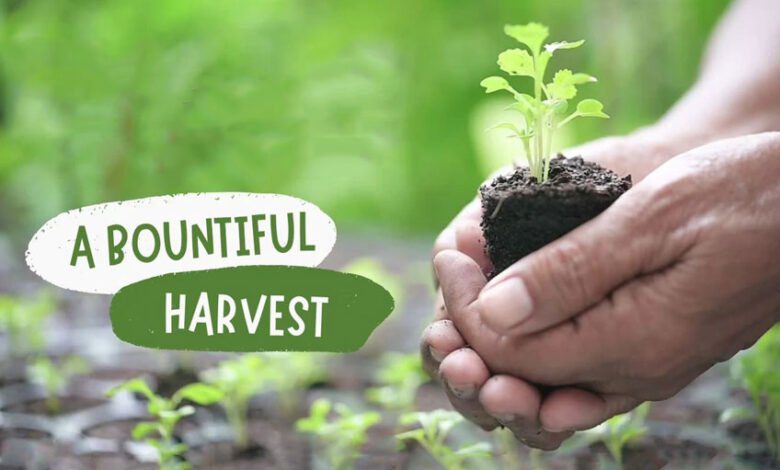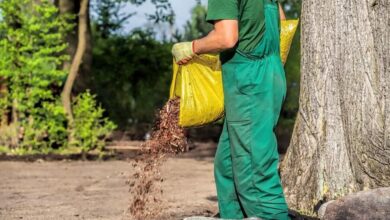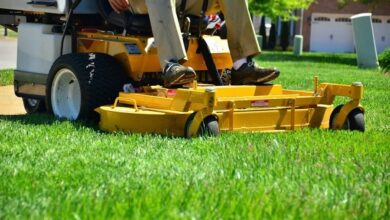The Complete Guide to a Bountiful Fall Garden

The vibrant colors of autumn are not just confined to the trees – fall is a second spring in the garden when a fresh bounty of tasty vegetables can be grown for harvest. While many gardeners pack up their tools after summer’s last tomato has been picked, the intrepid fall gardener knows that some of the best produce of the year awaits from plots sown as summer fades.
With proper planning and care, crops planted in the fall can yield high-quality greens, roots, peas, and more until winter frosts set in. Timing is key – certain vegetables thrive in cool conditions while others will bolt or languish. By selecting the right fall varieties, preparing your garden properly, and providing a little extra care, you can enjoy a productive autumn harvest.
Preparing Garden Beds for Fall Planting
While fall vegetables aren’t as demanding about heavily amended soil as spring plantings, taking time to prepare your garden beds will still pay dividends. Start by clearing away any spent summer crops and weeds. Dispose of diseased plants or those harboring insect pests far from the garden area to avoid recontamination.
Work 1 to 2 inches of aged compost into empty beds, or up to an inch of complete organic fertilizer if your soil tests low in key nutrients like nitrogen, phosphorus, and potassium. Double-digging beds by turning over spadefuls of earth can reveal nutrient-rich soil. Finished beds should be smooth, with fine soil on top that is firmed lightly with the back of your rake.
“Take time to prepare your garden beds in the fall and it will pay off with healthier plants and bountiful harvests.”
The Best Vegetables for Fall Gardening
Certain varieties of vegetables thrive in fall’s shorter, cooler days and chilly nights. Most grow quickly and can be harvested before heavy frosts end the season.
Leafy Greens
Spinach, kale, lettuces, arugula, mustard greens, and Asian greens like bok choy are excellent fall options. They prefer temperatures between 45-75°F and cool soil rich in nitrogen. Sow seeds 1⁄4 inch deep in nitrogen-rich soil 2-4 weeks before your first expected fall frost. Thin seedlings to 4 inches apart.
Root Vegetables
Carrots, beets, turnips, parsnips, onions, garlic, and radishes soak up the earthy flavors of fall while their roots store energy for next year’s growth. Direct sow root crops into lightly raked soil 2-3 months before your first fall frost. Thin carrots to 1-2 inches apart and beets to 4 inches apart.
Brassicas
Broccoli, cauliflower, Brussels sprouts, cabbage, and kohlrabi thrive when maturing in cool fall weather, which sweetens their flavor. Start seeds indoors 6-8 weeks before last spring frost and transplant outdoors 4 weeks before first fall frost, spacing 18-24 inches apart.
Peas
Sugar snap and snow peas bear abundantly in fall. Direct sow 2 inches deep and 2 inches apart in nitrogen-rich soil, then trellis vines. Make small, frequent plantings every 2 weeks from mid-summer through early fall for continual harvests.
Radishes
Quick-growing radishes will be ready to harvest in as little as 3 weeks from sowing. Mix radish seeds with slower germinating carrot seeds to mark rows. Thin seedling bunches to 1-2 inches apart for straight, crisp roots.
Table 1. Fall Gardening Vegetable Cheat Sheet
| Vegetable | Days to Maturity | Frost Tolerance | Best Sowing Time |
|---|---|---|---|
| Spinach | 40-50 days | Very high, down to 20°F | 4-6 weeks before first fall frost |
| Kale | 50-60 days | High, down to 15°F | 6-8 weeks before first fall frost |
| Lettuce | 40-60 days | Moderate, down to 25°F | 4 weeks before first fall frost |
| Carrots | 60-80 days | High, down to 15°F | 8-10 weeks before first fall frost |
| Beets | 50-70 days | High, down to 15°F | 6-8 weeks before first fall frost |
| Broccoli | 85-100 days | Moderate, down to 30°F | 12-14 weeks before first fall frost |
| Peas | 60-90 days | Low, down to 32°F | 10-12 weeks before first fall frost |
| Radishes | 22-30 days | High, down to 25°F | Anytime until heavy frosts |
Timing Your Fall Garden Plantings
The most important consideration for fall vegetable gardening is timing. Counting backwards from the date of your first expected fall frost, you can calculate ideal sowing times for various cool weather crops.
Short season crops like spinach and lettuce can be seeded 4 weeks prior to light frosts, while longer maturing varieties like cauliflower and kale need 10-12 weeks of growth before freezing. Carrots and beets fall in between, needing 6-8 weeks of cool temperatures to size up properly.
“By mastering the ideal sowing times for your climate, you can maximize your fall garden yields.”
You can also stretch out your fall harvests by successively planting small batches of fast growers like salad greens every 2-3 weeks through early fall. Just be sure to track days to maturity so later plantings have time to mature or be covered temporarily before killing frosts. A frosty forecast? No worries with a little season extension…
Caring for Your Fall Garden
While fall vegetable gardens require less watering and weeding than summer plantings, gardens still benefit from attentive care through the fall season. Monitor soil moisture weekly, watering thoroughly if the top few inches become crumbly dry.
Apply 2-3 inches of shredded leaves, straw or other organic mulch over beds to conserve moisture and insulate roots. Mulching also suppresses weeds and improves soil as it breaks down over winter. Pull any weeds that do pop up right away – large weed roots will compete with vegetables for nutrients.
Check under brassica leaves for bright green cabbage looper caterpillars or white cabbage moth larvae, hand picking off pests. Row covers exclude many flying pests, though require ventilation on sunny days. As temperatures drop below 45°F, season extending DIY structures like cold frames, cloches and low tunnels can boost growth, retain heat and protect from light frosts.
Fall Garden Harvesting & Storage
The key to great eating quality with fall veggies is to harvest at their peak. Unlike summer crops that you try to eke out production from until they’re zapped by frost, most fall vegetables should be gathered early while they’re still small and sweet.
Baby greens and roots just brushing mature size, crisp peas filling plump pods, broccoli heads or cabbage heads forming but still tight green buds – pick fall crops young and tender well before any hard freezes shut down your garden. Flavor deteriorates rapidly once cold damaged.
Carefully dig roots, harvesting greens like kale by cutting the entire plant just above soil level for a cut-and-come-again regrowth. Store unwashed veggies in perforated plastic bags in high humidity drawers of your refrigerator. With some planning for succession planting and season extension, you can be harvesting from your productive fall garden well into winter!
Key Stats on Fall Gardening Success:
- Gardens mulched with 4-6 inches of leaf litter in fall yield 25% more carrots and beets the following season than unmulched beds.
- Low tunnels cloched over garden beds can raise under-cover temperatures by 5-10 degrees, effectively preventing frost damage.
- 70% less irrigation water is required in fall vegetable gardens compared to summer plantings.
Conclusion
As spring and summer gardening winds down, don’t hang up your trowels just yet! Fall is made for growing many delicious and nutritious cold hardy crops. By prepping your soil, selecting appropriate veggie varieties, timing plantings carefully, and providing a little extra care, you can harvest bountiful yields of ultra-fresh greens, roots, peas and more long after summer garden clean up. With so many rewards on offer for the intrepid fall gardener, why not give autumn planting a try this year?
FAQs
What are the best vegetables to plant in a fall garden?
Some of the top vegetables that grow well in fall gardens include leafy greens like spinach, lettuce, kale and arugula, root crops like carrots, beets and turnips, brassicas like broccoli, cabbage and cauliflower, peas, radishes, and green onions. These all thrive in cooler weather.
When should I plant my fall vegetable garden?
You’ll need to calculate dates backwards from your expected first fall frost to allow enough growing time before cold weather sets in. Plant quick growing crops like lettuce and spinach 4 weeks before frost, while slower crops like broccoli and cabbage should go in 10-12 weeks prior. Succession plant fast growers.
Do I need to prepare fall garden beds differently than for spring?
Fall veggies aren’t as demanding, but adding aged compost to enrich soil is still beneficial. Clear away debris, amend soil, smooth into fine texture, then firm beds with a rake before direct sowing seeds or transplanting starts.
What kind of care does a fall garden need?
Fall gardens need less watering once established, but don’t let soil dry out completely. Monitor moisture weekly. Mulch beds to conserve moisture and insulate plant roots from cold snaps. Be diligent about weeding and pest control. Add frost protection as needed when hard freezes threaten.
When and how do I harvest fall vegetables?
Harvest fall crops like lettuce and greens while still young and sweet in flavor, before they are damaged by heavy frosts. Gently dig up root crops once they size up but before soil temperatures drop too low. Cut brassicas and peas once heads form or pods fill out. Store veggies promptly in high humidity.
Can I plant a second fall crop or season extend after harvesting summer plants?
Absolutely! Fast growing salad greens and radishes can be succession planted every 2-3 weeks until winter. Adding cloches, low tunnels, cold frames or greenhouses after clearing spent summer crops lets you continue gardening well into winter in some regions.




